New Developments in Culinary Wellness | By Richard Garcia
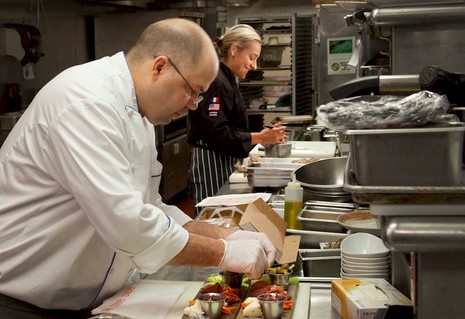
New Developments in Culinary Wellness
The thirst for wellness travel permeates every facet of the hospitality industry, including the kitchen. |
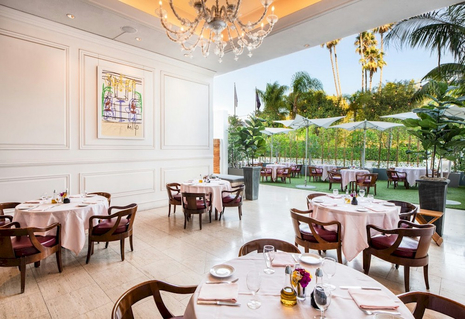
New Developments in Culinary Wellness
The dining room at Il Moderno, a classic American Italian kitchen at Cameo Beverly Hills. |
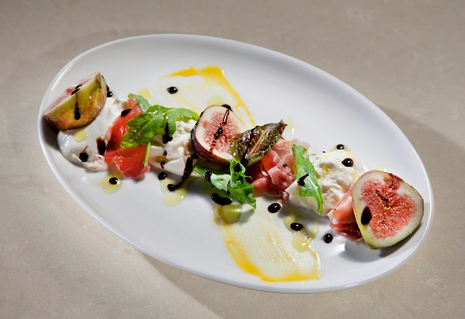
New Developments in Culinary Wellness
Hilton Boston Back Bay's on-site restaurant, Forty Dalton, serves up Fresh Fig and Burrata salad with Balsamic drizzle. |
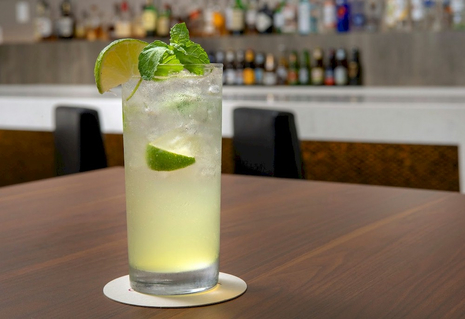
New Developments in Culinary Wellness
Low-ABV drinks are in favor among wellness travelers. |
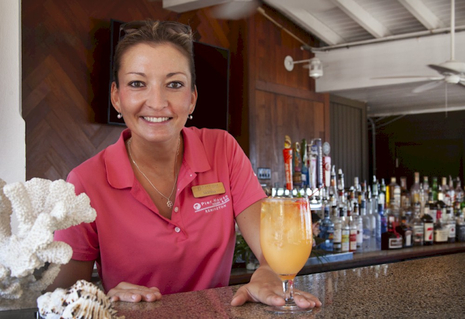
New Developments in Culinary Wellness
Hoteliers must recognize that there are limitations to personalization, and encourage open dialogue with guests. |
2024 is on track to become the year of wellness tourism.
A recent 2023 Hilton travel report paints a vivid picture, indicating that a whopping 50 percent of travelers are looking for travel to address either physical or mental wellness.
While spas and fitness centers have traditionally been synonymous with wellness travel, today's travelers seek more authentic, personalized, and profound wellness experiences, and hoteliers must be prepared to deliver. Above larger-scale approaches that include remote retreats for holistic healing and rejuvenation and connecting travelers with the local community, hoteliers can begin the transformation toward thoughtful wellness within existing amenities - namely, the kitchen.
Traditionally, the term "culinary wellness" has been confined within the industry to simply providing plant-based, allergy-conscious, and vegan offerings. In the context of today's dynamic travel landscape, it must extend beyond the obvious. Culinary wellness is much more than just the goods that we consume - it should encompass the holistic impact of not just a meal but the ingredients and their impact on our lifestyle, environments, and health.
Providing guests with these all-encompassing culinary wellness options is no longer an option but a necessity. Additionally, they should be universally accessible, extending beyond dining rooms but seamlessly integrated into spas, pool areas, and private accommodations. With wellness travel expected to continue on its path of accelerated influence, hoteliers have numerous tools at their disposal to reimagine what culinary wellness means in this transformative context.
The Environment Matters
Taking the idea that culinary wellness is more than the meal itself one step further, hoteliers should first and foremost consider that the environment in which guests consume and interact with food offerings directly impacts their wellness value. The trick is to maximize interior and spatial diversity, allowing guests, staff, and visitors to select their favored environments during mealtimes. Furthermore, strategically pairing certain offerings with designated spaces based on research and data linking the two positively is a direct approach to ensuring guest satisfaction without them having to specifically ask for it.
The spatial opportunities are boundless in terms of marrying the physical space and food and beverage. Quiet spaces such as lounges and interior nooks and designated exercise spaces -such as yoga on the roof and spas–provide mental clarity, enhanced by food and beverage offerings such as tea, juices, fruit, and balanced salads and sandwiches. Higher-energy spaces, such as in-hotel conference rooms, common areas, and the poolside, are better suited for more filling sustenance to provide endurance. Culinary wellness should be viewed as a function, and considering its physical environment is vital.
Don't Generalize - Specify
The secret sauce - literally and figuratively - to guest satisfaction in culinary wellness offerings is specification. Hoteliers and culinary professionals should take an intentional approach to crafting their menus, considering how specific ingredients and food preparation methods impact our lifestyles, day-to-day activities, and even our brain health and development.
While this notion has typically revolved around weight loss goals, culinary offerings should also be conscious of different periods of the day. Including natural ingredients that help facilitate a good night's sleep, for example, is a standout tactic to take culinary wellness to the next level. While the kitchen is not a pharmacy, it provides hoteliers and, retroactively, guests the opportunity to reimagine what comfort and relaxation can mean when it comes to nourishment during travel.
Engage the Community
Freshness is key to culinary wellness, and it is no secret that procuring ingredients that correspond with healthy and lifestyle-conscious meals is more costly; however, this is a trade-off that hoteliers will need to make to remain relevant and satisfy their customer base. This approach shows long-term payoff, and there are sustainable, community-conscious approaches to take to reduce costs upfront. If you are not sourcing locally, you are doing your business, its customers, and the surrounding community an injustice. Not only does it cut down on transportation and import costs, but it also gives back to the local community, establishes mutually beneficial relationships, and carries inherent wellness benefits.
Hotel-owned organic gardens have been steadily rising in popularity and are a fantastic source of supplemental produce. Traditionally more common in luxury and upper-class resorts and hotels, incorporating the practice across the board allows properties to focus on incorporating locally-grown ingredients in their menus and expands travelers' access to wellness offerings. Hotels in urban environments are especially lacking in this venture and should consider solutions such as rooftop gardens and/or private honey production to expand their culinary wellness capabilities.
When sourcing locally, however, challenges may arise in procuring the necessary ingredients throughout the year. The key to tackling the problem before it arises is doing as much as possible to stay within the season when crafting menus. For example, while hoteliers in New England may not be able to access much more than what has been stored in the cellar for the winter season, maple syrup is always in season. Chefs should find ways to incorporate it into their offerings, ensuring that their ingredients are as fresh and natural as possible. Similarly, when fruits, vegetables, and other produce are in season, they are rich in healthy nutrients, especially as they will travel shorter distances upon delivery. Sourcing local goods helps ensure you're providing the best possible ingredient.
What About Drinks?
While much of the conversation surrounding wellness travel revolves around food and nutritious epicurean meals, beverages are a huge additive component of the culinary wellness realm. Alcohol has historically been a massive contributor to high blood pressure, heart disease, and other chronic illnesses. While fully alcohol-free mocktails are often considered a prime healthy alternative to traditional cocktails, the demand for them is less than people may think. However, hoteliers should focus on low-ABV (alcohol by volume) drinks instead.
Low-ABV drinks such as spritzes and seltzers are currently in favor among wellness travelers. Ensuring a wide selection of low-alcohol beverages - in addition to various natural teas, juices, and smoothies - provides yet another opportunity to accommodate the demand while steering guests toward more wellness-oriented choices.
Don't Go Overboard
Hoteliers should also be mindful not to go overboard with traditionally healthy options only. Whether wellness-oriented or not, all travel is bound to be associated with certain levels of indulgence. Wellness may not carry the same inherent meaning to all travelers. While some may associate it with an abundance of fruit, grain bowls, and smoothies, others view it as a mental play instead.
For them, ending the day with an indulgence such as pasta, steak, chocolate, or the all-American hamburger provides relief, and hoteliers must recognize that they are the ones with the ability to provide that comfort and mental solace to guests in need. Finding a steady balance between conventionally healthy food and traditional offerings to provide choice is crucial. Guests should have the ability to make healthier decisions if they so desire, or indulge in high-carb, filling treats as a form of a much-needed mental break instead.
Recognize Your Limits
While specification and personalization are key to meaningful culinary wellness, it is also important to recognize the limits of the industry and work within those parameters rather than unsuccessfully attempting to achieve the impossible. We as an industry cannot be everything to everybody, and a two-way open dialogue between guests and management is crucial in ensuring success.
While culinary professionals cannot personally accommodate each guest's unique preferences, they can focus on avoiding top allergens and a broader range of lifestyle preferences and produce benefits instead. Encouraging communication and receptive management will make wellness travelers feel heard and provide the opportunity to improve where possible. Consistency is vital, and going above and beyond while not exerting the limits of the teams' capabilities is paramount to continuing the journey with a sustainable shift toward culinary wellness.
Wellness travel remains a resilient force within the travel and hospitality industry, perfectly positioned for sustained growth. As resorts, tours, and travel groups continue to be developed to accommodate this permanent shift, the Global Wellness Institute predicts that demand will more than double from 2022 to 2027. The hotel food and beverage sector will continue to be inundated with calls toward offerings that reflect wellness travel, and by innovating and readily diving into seeking out new approaches, hoteliers can anticipate increased guest satisfaction levels, retention of relevancy, and continued business growth.
Culinary wellness has traditionally been associated with upper-scale, luxury properties, and it has historically been simpler to execute in suburban and nature-surrounded establishments. With wellness travel trends further developing, urban hospitality spaces have untapped potential to join the bandwagon. The sky is the limit when it comes to culinary wellness, and as society and its needs evolve, so will the hospitality industry.
Reprinted from the Hotel Business Review with permission from http://www.hotelexecutive.com/.
Remington Hospitality
www.remingtonhospitality.com/
14185 Dallas Parkway, Suite 1150
USA - Dallas, TX 75254
Phone: +1 972 980 2700
Email: info@remingtonhotels.com
Remington Hospitality to Manage Holiday Inn Corpus Christi Airport & Conference Center
Remington Hospitality Announces The Retirement Of President Chris Green
The Era of 'Returns' Is Over in the Hospitality Industry | By Chris Green

